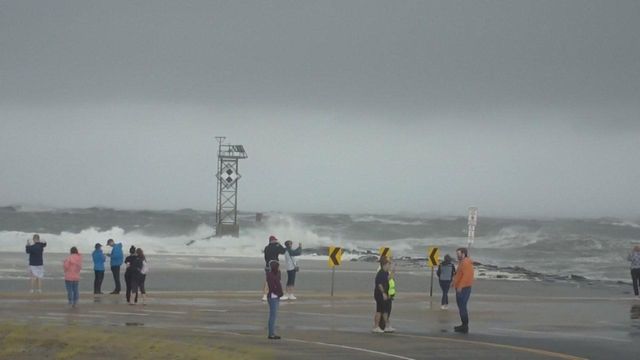No longer a hurricane, Dorian lashes Canada and knocks out power
OTTAWA, Ontario -- Winds produced by the remnants of Hurricane Dorian tore roofs off buildings, downed trees, collapsed a construction crane and left hundreds of thousands of people without electricity in three provinces in Canada on Saturday.
Posted — UpdatedOTTAWA, Ontario — Winds produced by the remnants of Hurricane Dorian tore roofs off buildings, downed trees, collapsed a construction crane and left hundreds of thousands of people without electricity in three provinces in Canada on Saturday.
A storm surge accompanying Dorian produced waves estimated to be 50 feet high, jeopardizing coastal villages. Online maps posted by utilities in Nova Scotia and the neighboring provinces of New Brunswick and Prince Edward Island showed that more than 450,000 locations were without electricity early Saturday evening, the result of wires being knocked down by intense winds before the storm made landfall.
As the winds began inflicting damage in Canada, the storm was upgraded to a Category 2 by hurricane tracking services in both Canada and the United States. But by Saturday afternoon they declared that Dorian was no longer a hurricane but “a very intense post-tropical system.” That aside, Environment Canada, the country’s weather agency, reported that its offshore weather buoys were recording winds of more than 90 mph and waves as high as 65 feet.
“All that’s changed is the storm’s structure,” Bob Robichaud, a meteorologist at the Canadian Hurricane Center, told reporters in Halifax, Nova Scotia. “We’re still talking about a very dangerous storm.”
Along with the winds, forecasts predict that many areas will get as much rain over the next 24 hours as they receive in a month in the often damp maritime region.
No injuries were reported. But even before the storm made landfall in Nova Scotia, large numbers of trees were uprooted or broken apart. Along with the pieces of roofs, they damaged power lines, houses and parked cars.
Most dramatically, a construction crane at a high-rise building project in downtown Halifax buckled and collapsed after being buffeted by the winds. Adjacent buildings, while undamaged, were evacuated as a precaution.
In a statement, Ralph Goodale, Canada’s public safety minister, said that the federal government would provide recovery assistance, including the use of the military. Restoring electricity, however, would likely be delayed. Karen Huff, the chief of Nova Scotia Power, said that the high winds made it too dangerous on Sunday night for the utility’s crews to work on damaged or destroyed power lines. Nova Scotia, and Halifax in particular, is familiar with extreme storms. Hurricane Hortense in 1996 caused extensive property damage and altered the shoreline of the province. In 2003, Hurricane Juan killed two people in the province, destroyed tens of thousands of trees and severely damaged the electrical system and many buildings.
Weather forecasters anticipated that Dorian would cross Nova Scotia and New Brunswick on Saturday night before striking the western portion of Newfoundland on Sunday.
Related Topics
Copyright 2024 New York Times News Service. All rights reserved.





